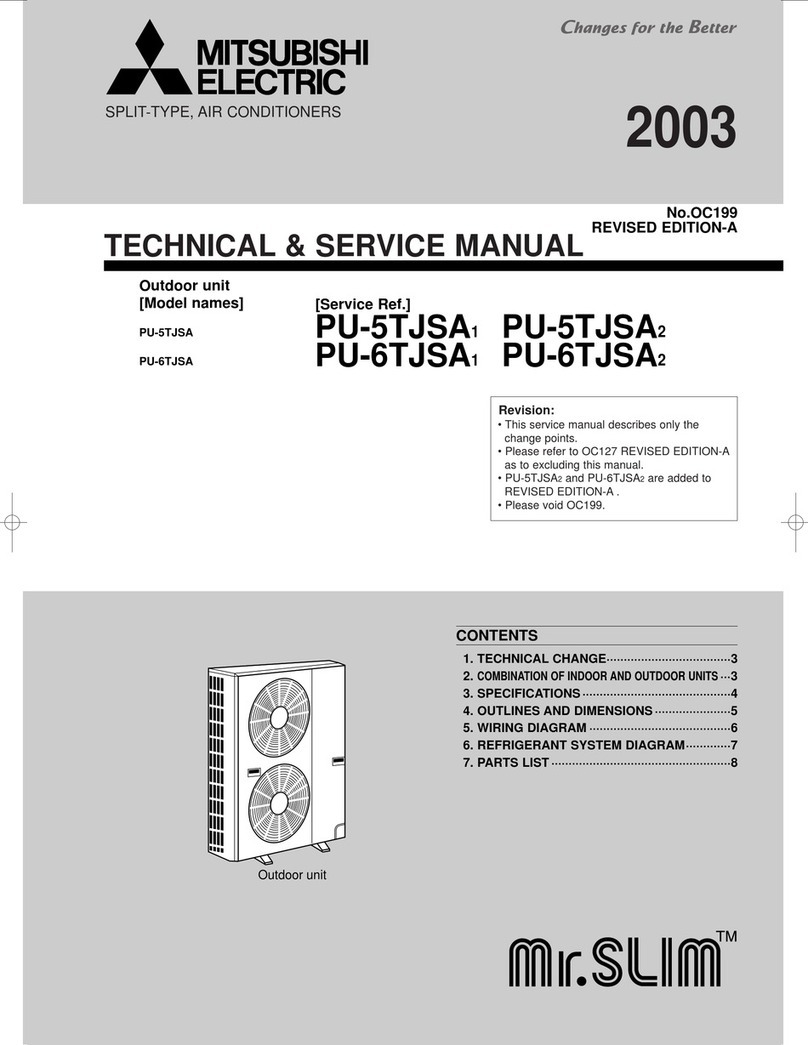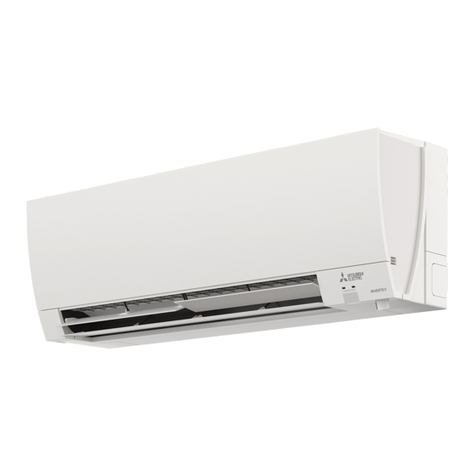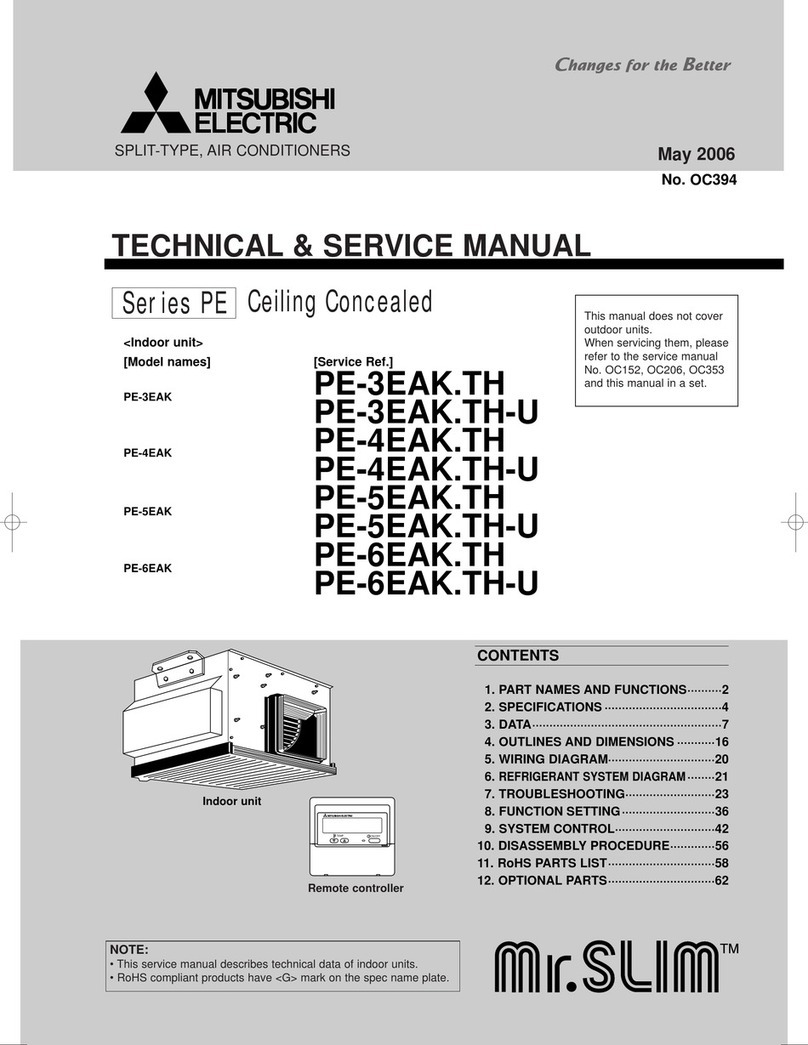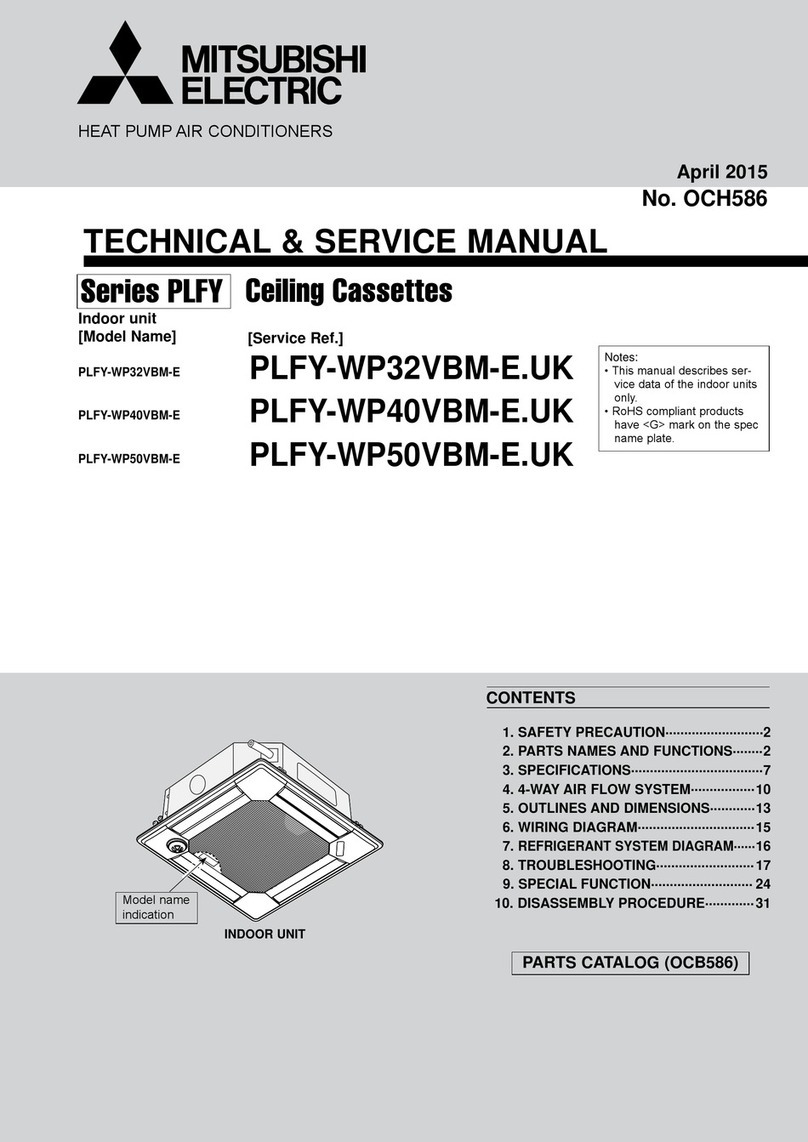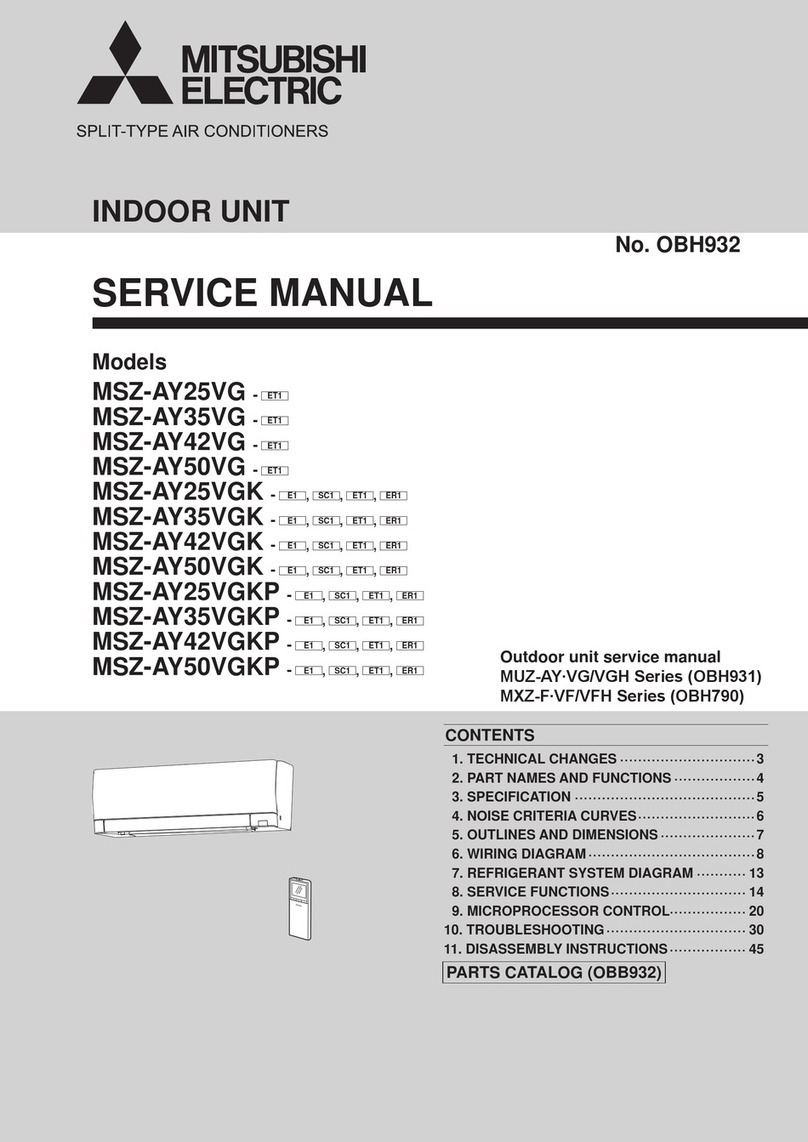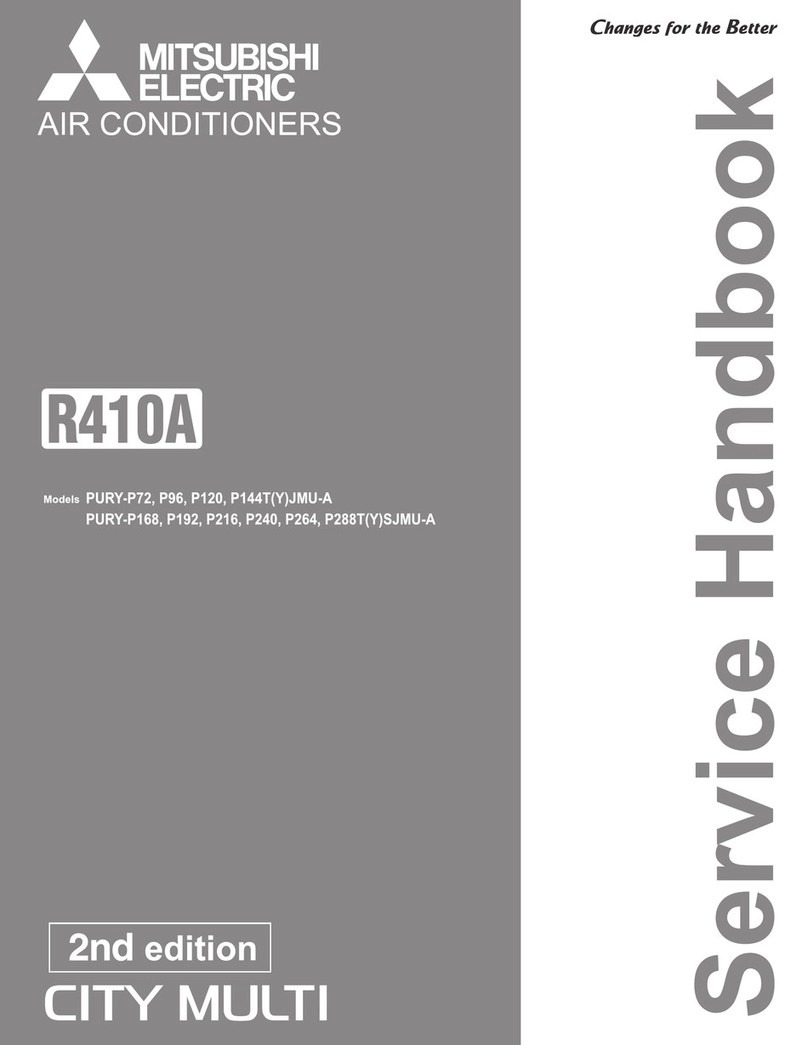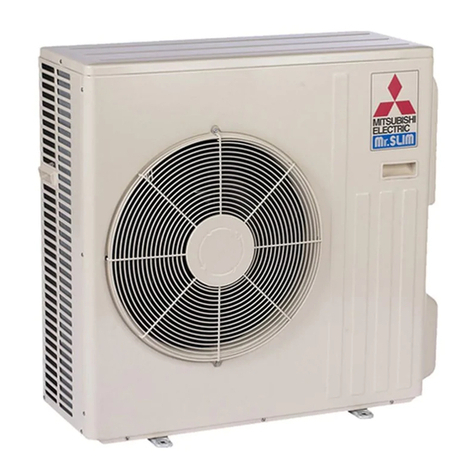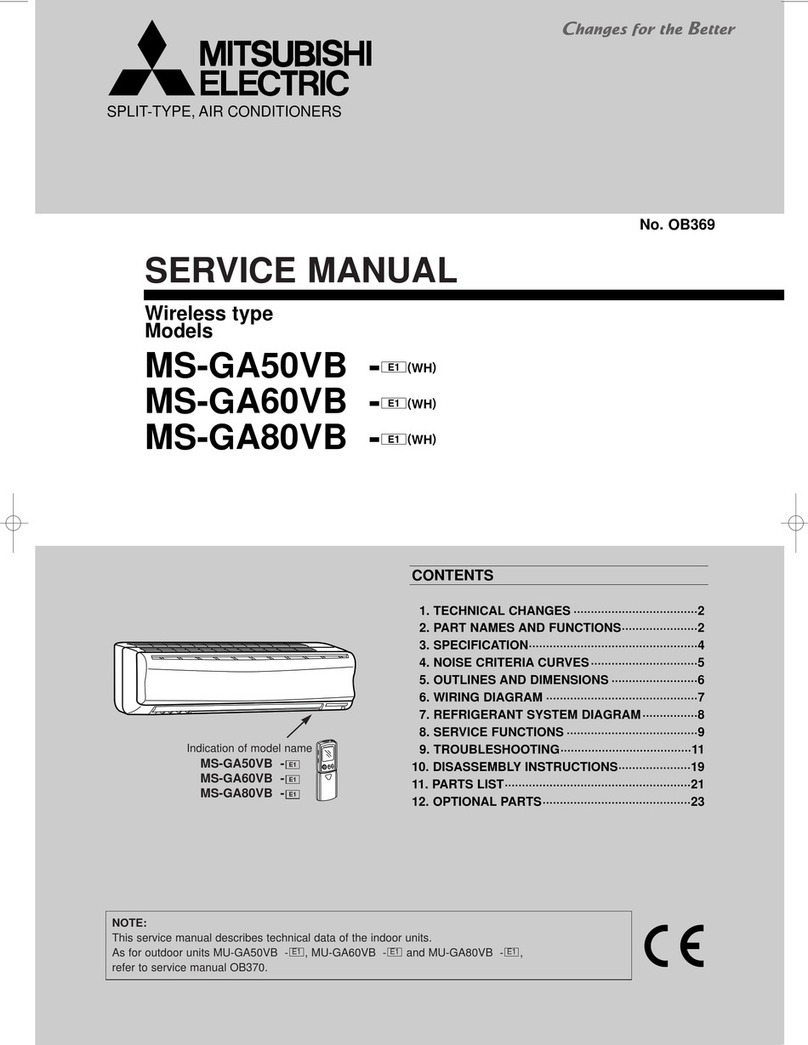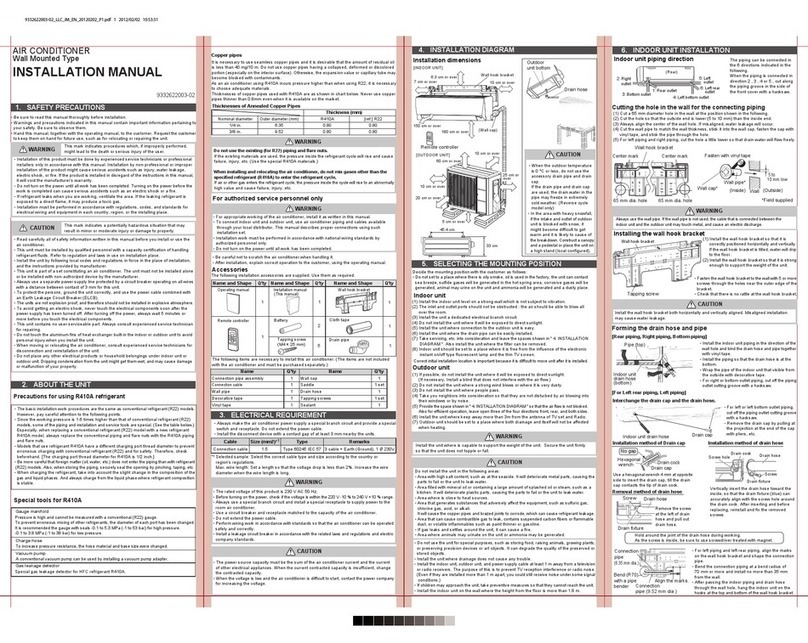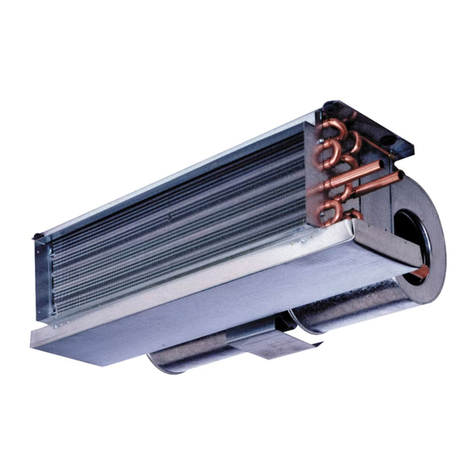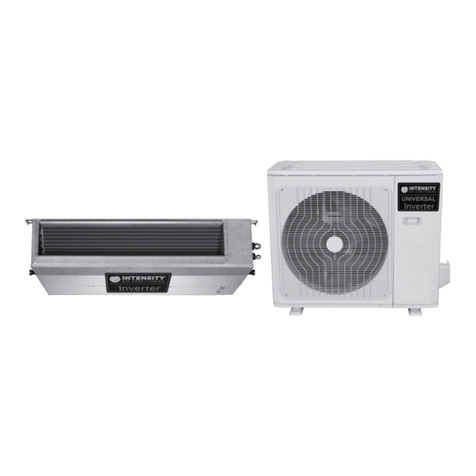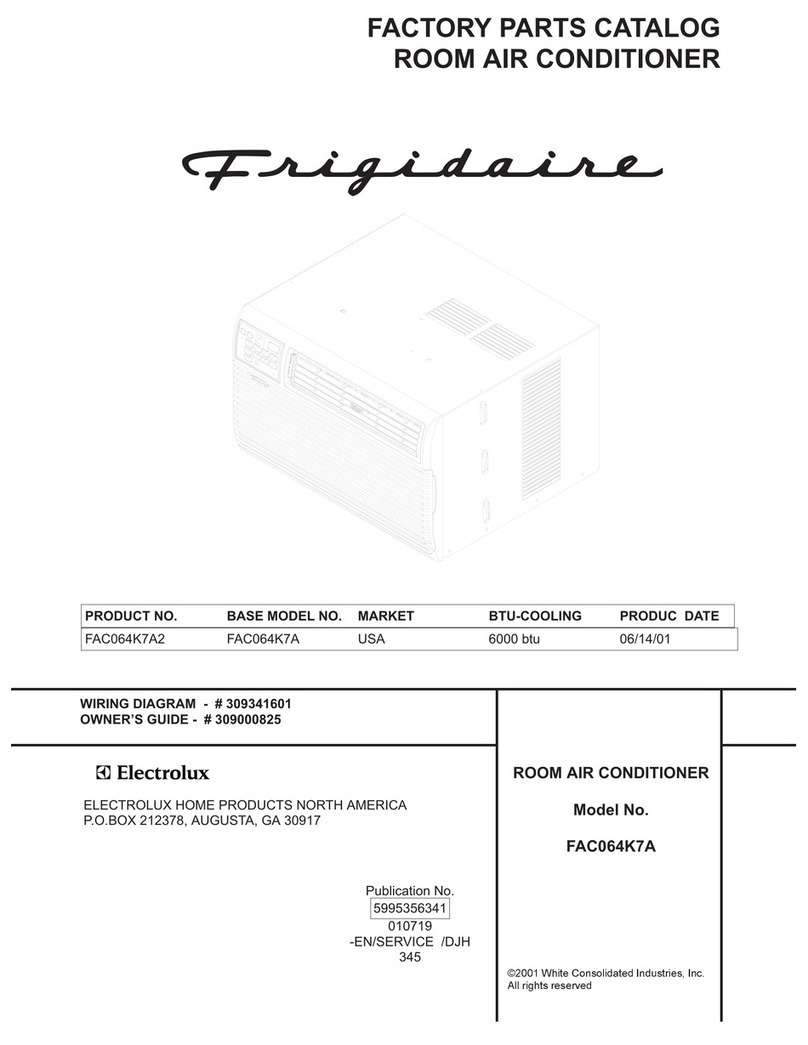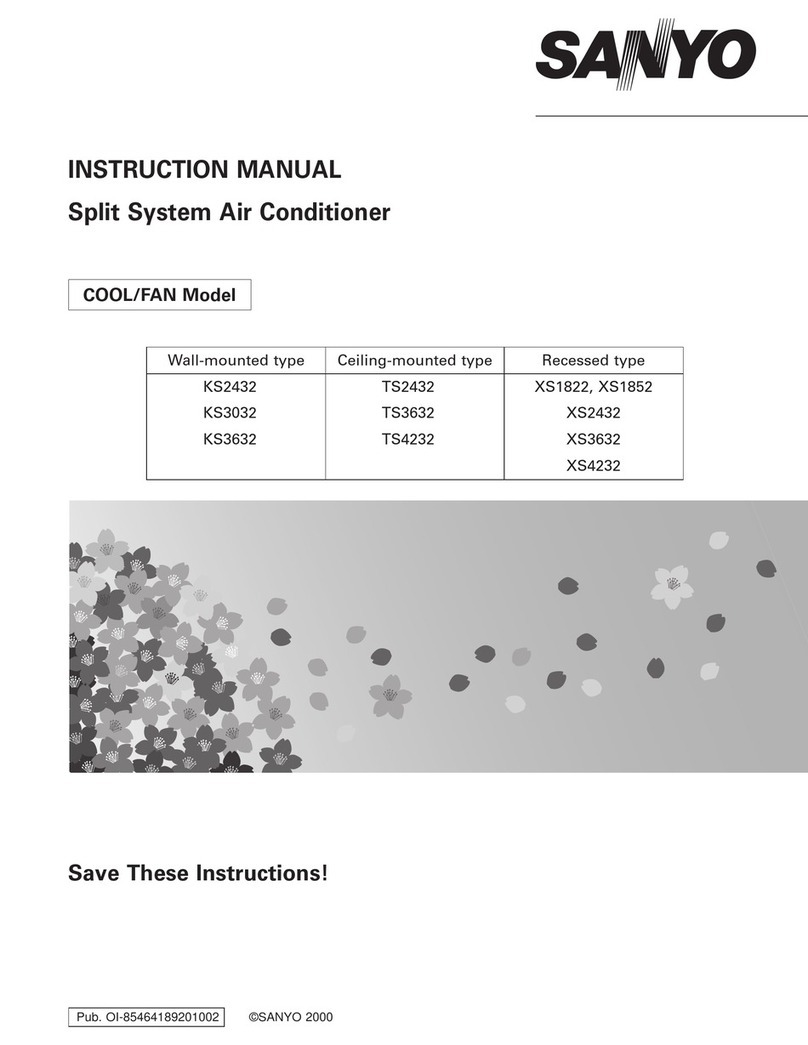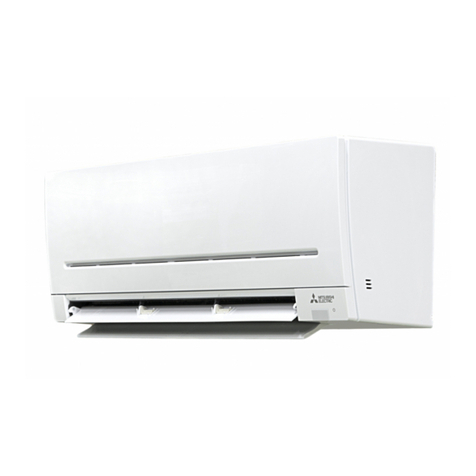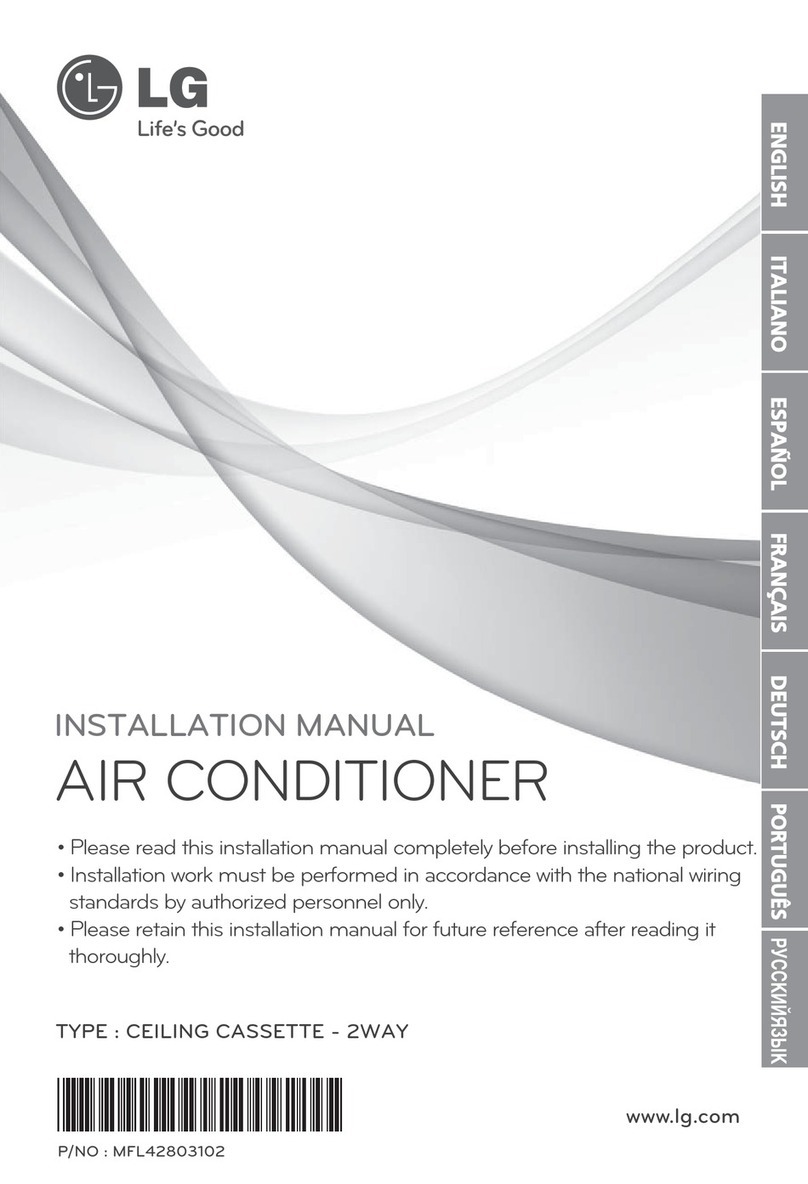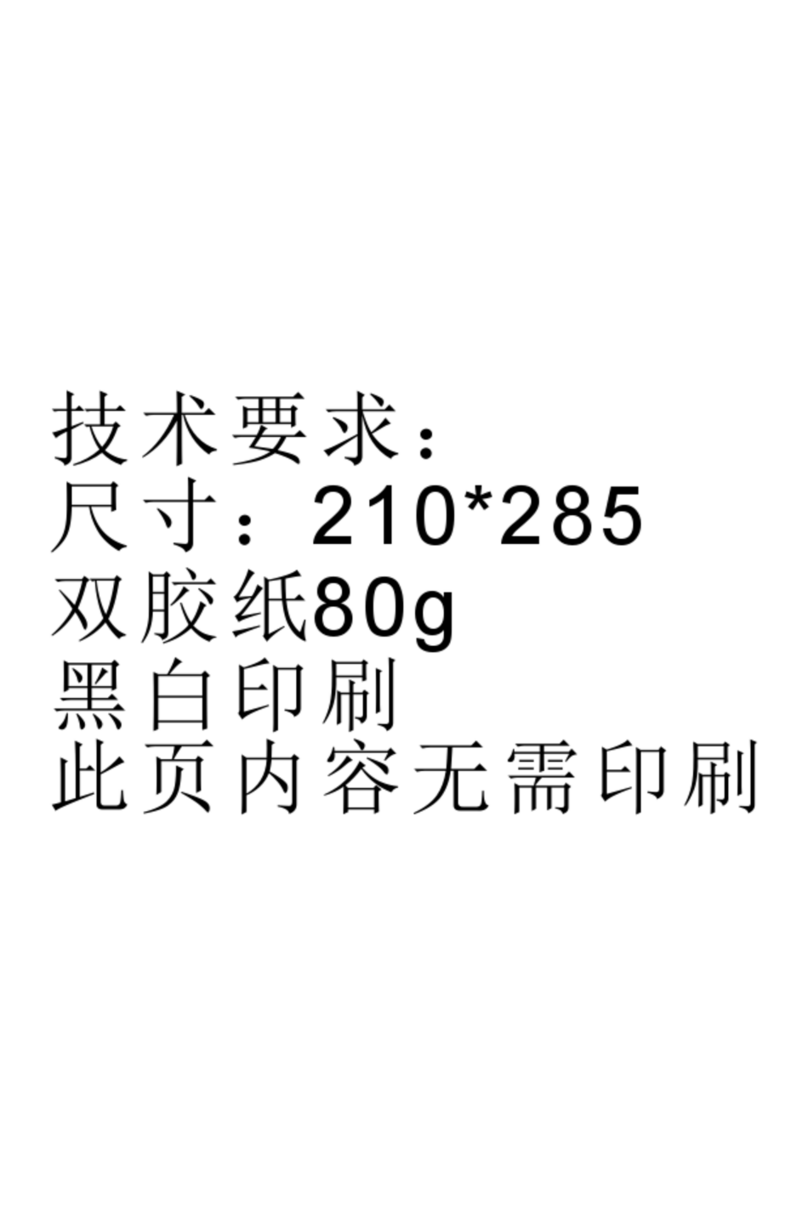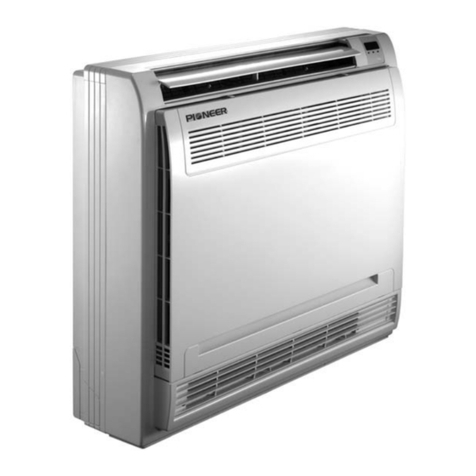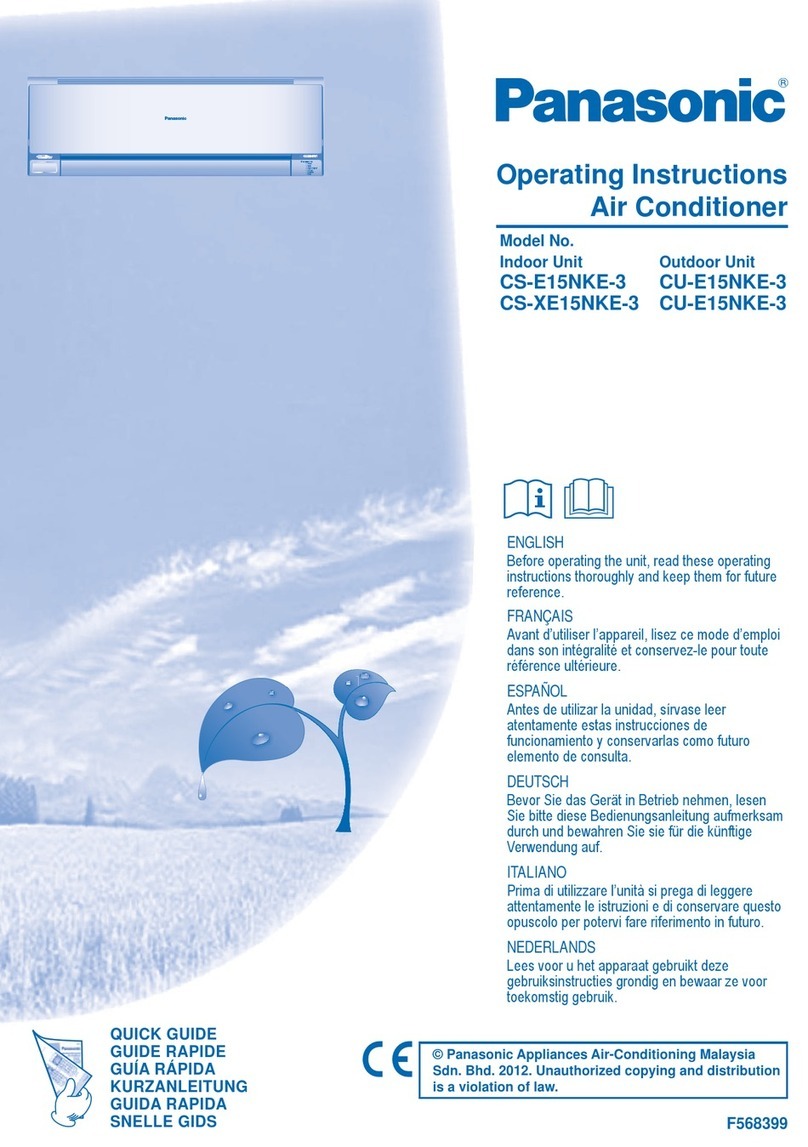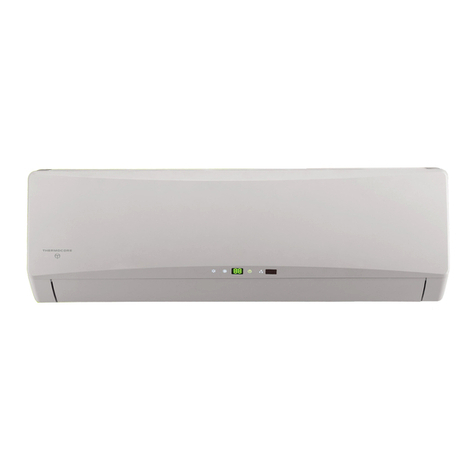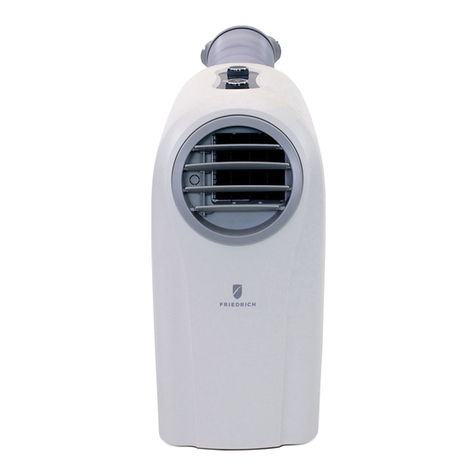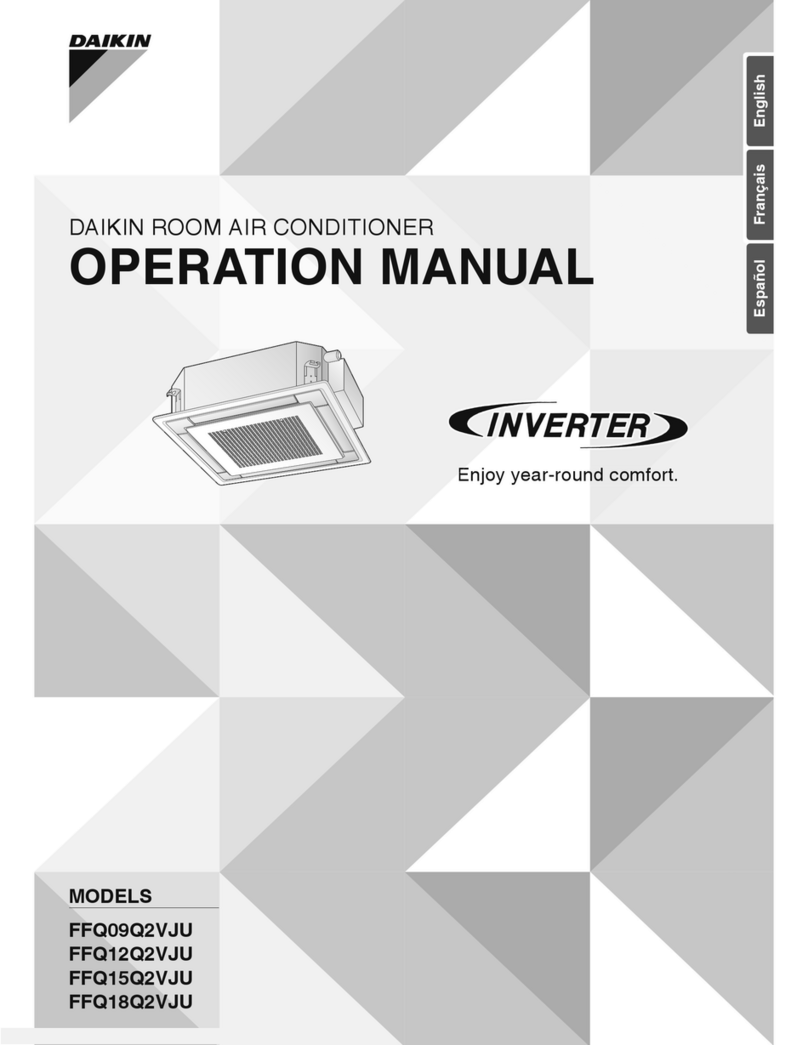• OPERATINGINSTRUCTIONS•
Even if these items are checked, when the unit does not recover from the
troub e, stop us ng the a r cond toner and consu t your dea er.
The unit cannot be operated. • Is the breaker turned on?
• Is the power supply plug connected?
• Is the ON timer set? I_
The unit cannot be operated • This protects the unit according to instruc-
for about 3 minutes when tions from the microprocessor. Please
restarted, wait.
Mist is discharged from the air • The cool air from the unit rapidly cools tools-
outlet of the indoor unit. ture in the air inside the room, and it turns
into mist.
• This is for the swing operation of the HORI-
ZONTAL /VERTICAL VAN E to be performed
normally.
The swing operation of the
HORIZONTAL /VERTICAL
VANE is suspended for a
while, then restarted.
The air flow direction changes
during operation.
The direction of the horizontal
vane cannot be adjusted with
the remote controller.
The unit starts operation by
itself when the main power
is turned on, though it isn't
operated with the remote
controller.
• When the unit is operated in COOL or DRY
mode, if the operation continues with air
blowing down for 0.5 to 1 hour, the direction
of the air flow is automatically set to horizon-
tal position to prevent water from condensing
and dripping.
• These models are equipped with an auto re-
start function. When the main power is turned
off without stopping the unit with the remote
controller and is turned on again, the unit
starts operation automatically in the same
mode as the one set with the remote control-
lerjust before the shutoff of the main power.
Refer to "Auto restart function" I_.
The fan of the outdoor unit
does not rotate even though
the compressor is running.
Even if the fan starts to rotate,
it stops soon.
Water leaks from the outdoor
unit.
•When the outside temperature is low dur-
ing cooling operation, the fan operates
intermittently to maintain sufficient cooling
capacity.
• During COOL and DRY operations, pipe or
pipe connecting sections are cooled and this
causes water to condense.
iiii_ii_ _}}_}i_iiii!!i_iii_ii_!i_!i_!i_!i_!i_!i_.l_!i_!i_!i_!i_!i_!i_!i_!i_!i_!i_!i_!i_!i_!i_!i_!i_!i_!i_!i_!i_!i_!i_!i_!i_!i_!i_!i_!i_!i_!i_!i_!i_!i_!i_!i_!i_!i_!i_!i_!i_!i_!i_!i_!i_!i_!i_!i_!i_!ii:
The display on the remote • Are the batteries exhausted? I_
controller does not appear or • Is the polarity (+, -) of the batteries correct?
it is dim. The indoor unit does
not respond to the remote • Are any buttons on the remote controller of
control signal, other electric appliances being pressed?
Do • Is the temperature setting appropriate?
The room cannot be cooled
sufficiently. • Is the fan setting appropriate? Please change
fan speed to higher setting. I_
• Are the filters clean?
• Is the fan or heat exchanger of the indoor
unit clean?
• Are there any obstacles blocking the air inlet
or outlet of the indoor or outdoor unit?
• Is a window or door open?
• When a ventilation fan or a gas cooker is
used in a room, the cooling load increases,
resulting in an insufficient cooling effect.
• When the outside temperature is high, the
cooling effect may not be sufficient.
_
The air from the indoor unit • Are the filters clean? I_
smells strange. • Is the fan or heat exchanger of the indoor unit
clean?
• The unit may suck in an odor adhering to the
wall, carpet, furniture, cloth, etc. and blow it
out with the air.
so
Cracking sound is heard. • This sound is generated by the expansion/
contraction of the front panel, etc. due to
change in temperature.
"Burbling" sound is heard. • This sound is heard when the outside air is
absorbed from the drain hose by turning on
the range hood or the ventilation fan, making
water flowing in the drain hose to spout out.
This sound is also heard when the outside air
blows into the drain hose in case the outside
wind is strong.
Mechanical sound is heard • This is the switching sound in turning on/off
from the indoor unit. the fan or the compressor.
The sound of water flowing • This is the sound of refrigerant or condensed
is heard, water flowing in the unit.
In the following cases, stop using the air conditioner and consult your
dealer.
• When water leaks or drips from the indoor unit.
• When the left operation indicator lamp blinks.
• When the breaker trips frequently.
• The remote control signal is not received in a room where an electronic ON/OFF
type fluorescent lamp (inverter-type fluorescent lamp, etc.) is used.
• Operation of the air conditioner interferes with radio or TV reception. An ampli-
fier may be required for the affected device.
• When an abnormal sound is heard.
En-9


